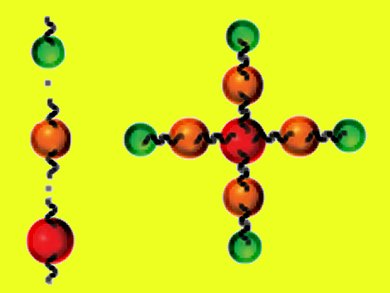Quantum dots are particles of semiconductor that can absorb and emit light efficiently, and at custom-chosen wavelengths. The electronic and optical properties of colloidal quantum dots, including the wavelengths of light that they can absorb and emit, depend on their size. Until now there is no strategy to build higher-order structures, or complexes, out of multiple different types of quantum dots. Researchers, led by Shana Kelley and Edward H. Sargent, University of Toronto, Canada, filled this gap by constructing so called artificial molecules.
They received a set of self-assembled materials with exciting properties by coating cadmium telluride nanocrystals with selected sequences of DNA. Quantum dots with between one and five DNA-based binding sites are synthesized and then used as building blocks to create a variety of rationally designed assemblies, including cross-shaped complexes containing three different types of dots. Like the antennas in radios, these complexes capture dispersed energy and concentrate it to a desired location. The complexes do so using wavelengths found in sunlight.
- DNA-based programming of quantum dot valency, self-assembly and luminescence,
Grigory Tikhomirov, Sjoerd Hoogland, P. E. Lee, Armin Fischer, Edward H. Sargent, Shana O. Kelley,
Nature Nanotechnol. 2011.
DOI: 10.1038/nnano.2011.100




